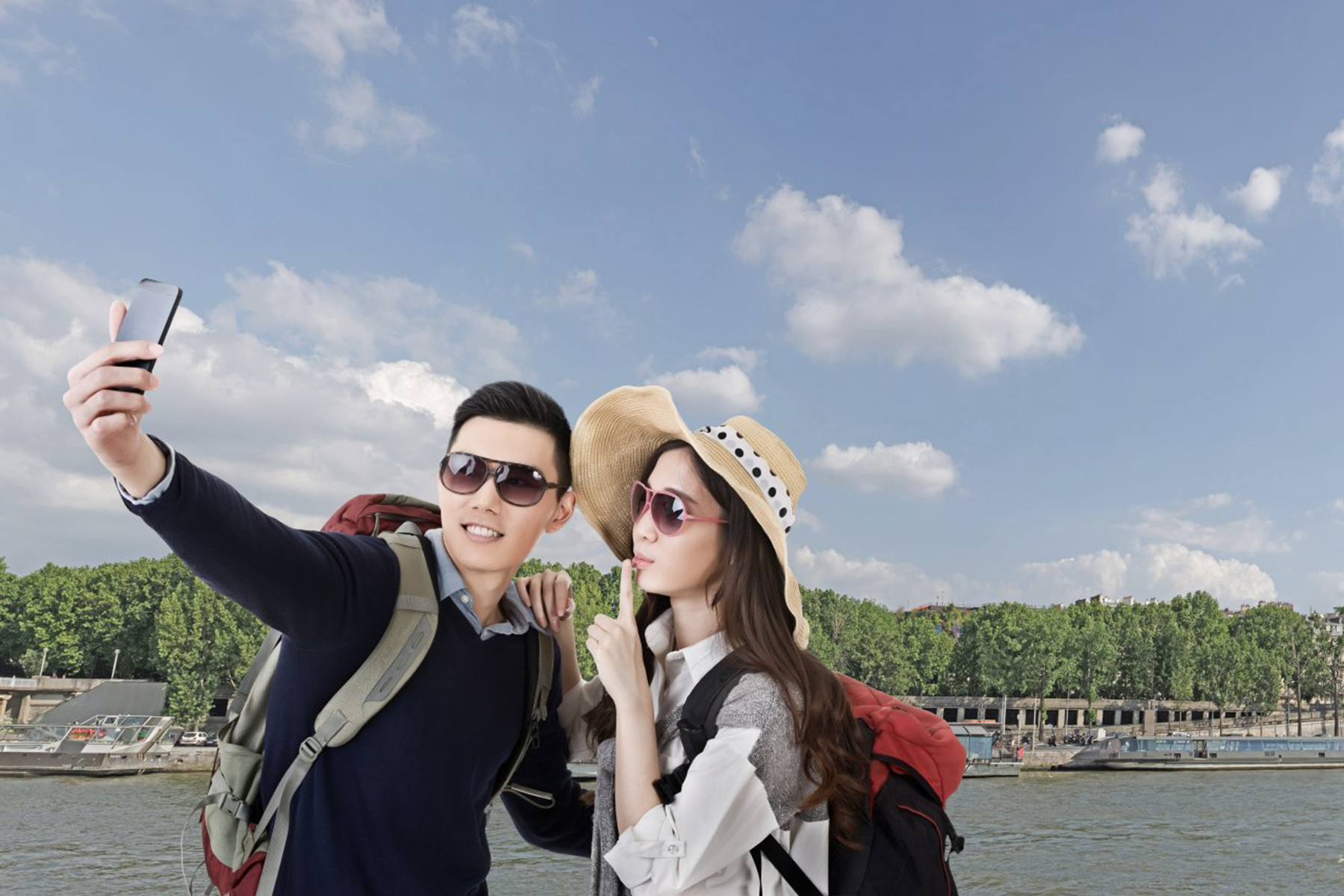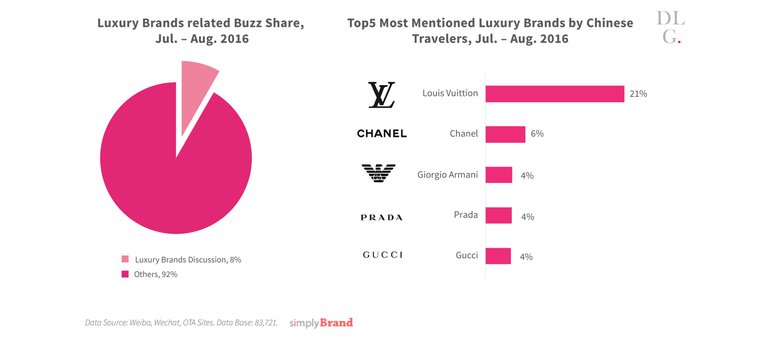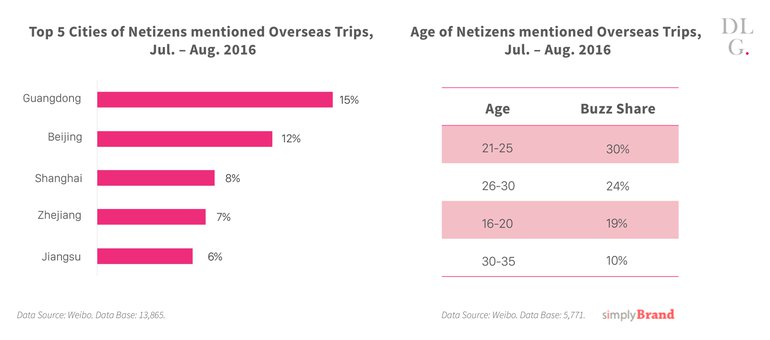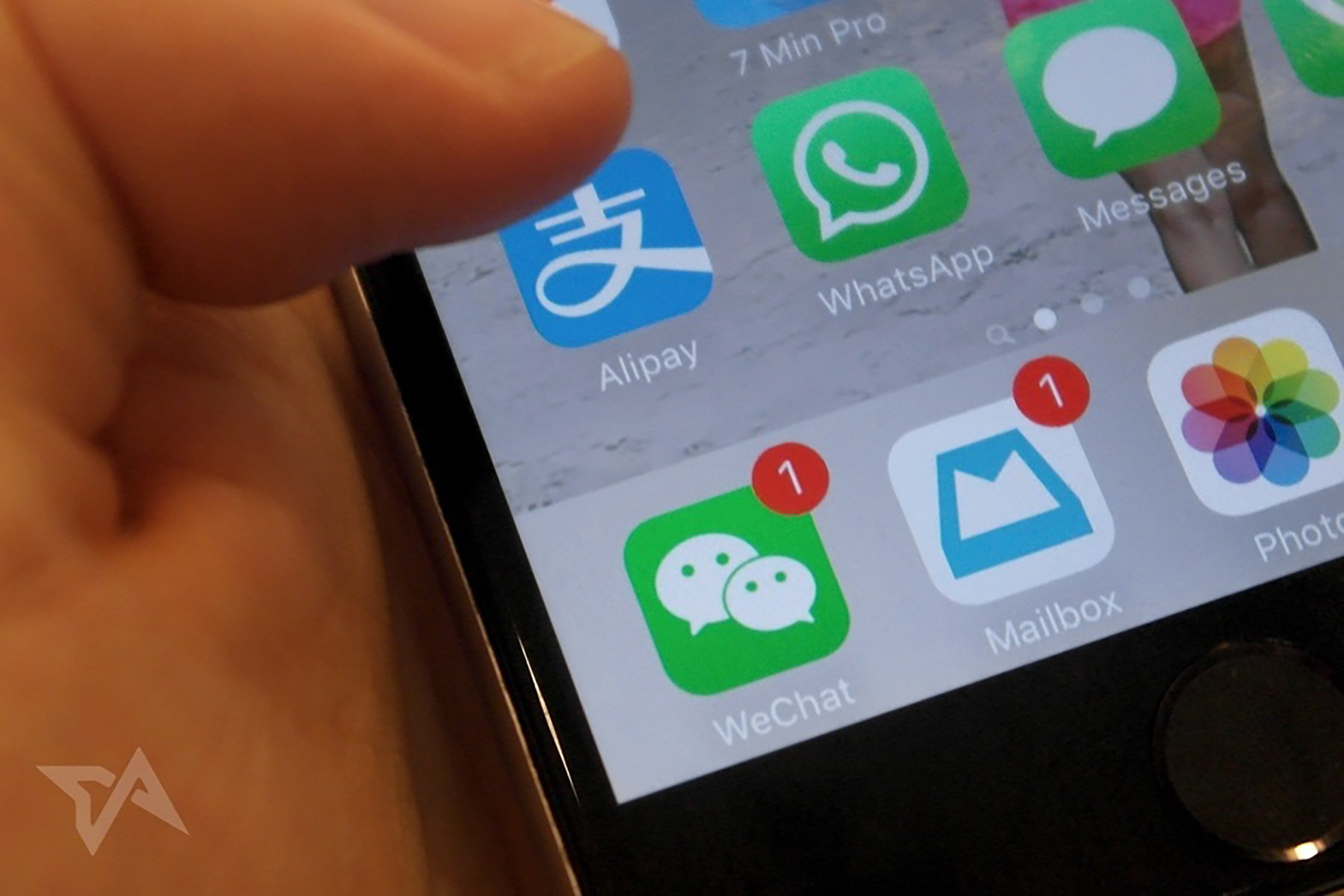Hong Kong drops from Top 5
According to the study of over 83,700 messages, South Korea and Thailand remain favoured among other Asian destinations. Unsurprisingly, Hong Kong which — as a few travel companies had already suspected — has dropped out of the top 5 destinations completely. Associated as an “outlet shopping” destination, it stands little chance against other destinations, seeing as they offer more than just attractive retail prices.
- South Korea as a go-to trendsetter for China when it comes to entertainment, beauty and more.
- Thailand with its stunning beaches and temples.
- Japan with its rich history, highly esteemed cuisine and fascinating culture.
- Taiwan with its nature, world-class hot springs and notable street food.
Luxury Shopping remains a Focal Point
While the demand for experiential travel is growing, shopping remains a key draw, as evidenced by the monitoring of various travel discussions. DLG’s study on buzz related to luxury brands found that 8% of discussion directly mentioned specific luxury brands.
- The most discussed brands are Louis Vuitton, followed by Chanel, Giorgio Armani, Prada and Gucci.
- Analyzing more in detail the activity of these brands within that period of time, it appears that the winners were highly active during the summer months, even if that period is often considered as a “slow period” for retailers.
As an example, Louis Vuitton collaborated with few highly popular celebrities (like Fan Bingbing and Jing Boran) to promote the LV travel suitcase, which in turn generated an enormous amount of social buzz.
Secondary provinces match up with Shanghai
Out of all the mentions about overseas trips, 15% were regarding Guangdong, which topped the city ranking, followed by Beijing, Shanghai and then trailed by Zhejiang and Jiangsu at just 1 to 2% behind.
- This comes at a pleasant surprise as provinces like Zhejiang and Jiangsu, that have been long considered as secondary, are beginning to get noticed more.
- This presents brands with a window of opportunity in which they can establish themselves in these not-yet-as prevalent regions in hope of a future payoff.
- Another interesting fact is that more than half of the online users sharing these experiences about their summer trips were between 21 and 30 years old, with a further 16% being within the age of 16 to 20.
This is indication that overseas trips are not only limited to a mature audience, and that the spending power is already there in the younger demographic.
In the analysis about the most popular points of discussion regarding product categories, DLG found that beauty products were mentioned most, followed by handbags, watches, and then jewellery. Within the beauty category, 17% of discussions were about perfume, a segment that in the past did not particularly resonate in the Chinese market.
This shift illustrates the growing “internationalisation” of Chinese consumers, and also the positive correlation with beauty brands communication.

Indicators are confirming the growing similarities between the habits of Chinese travelers and those of their European and U.S. peers, and this can be observed beyond the first-tier cities. Travelers are now considering more destinations than in the past and their expectations have changed.
In a context where a brand’s marketing calendars are focused on supporting local retail, it clearly shows that the top places will be taken by the ones that are not afraid to invest in China to support their travel retail performance.
If you enjoyed reading this and would like to read more tourism and travel related content, feel free to take a look at our Tourism Case Studies Library!









